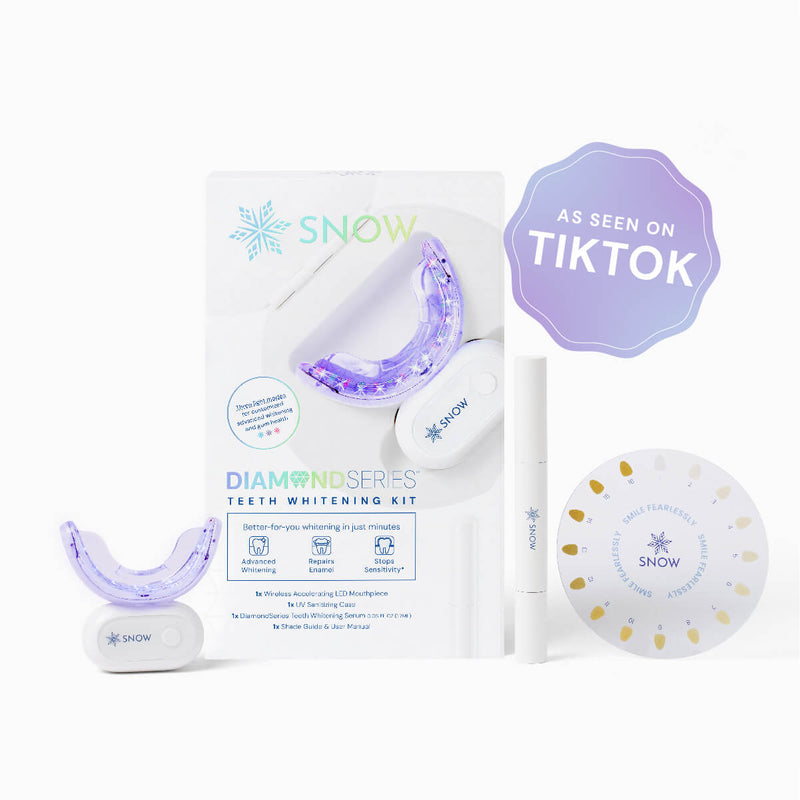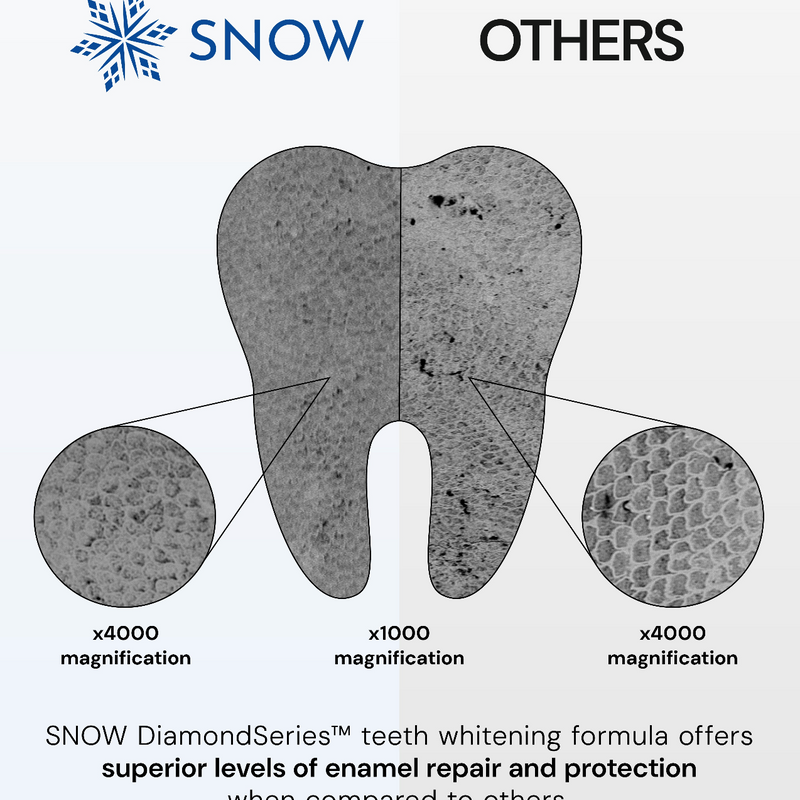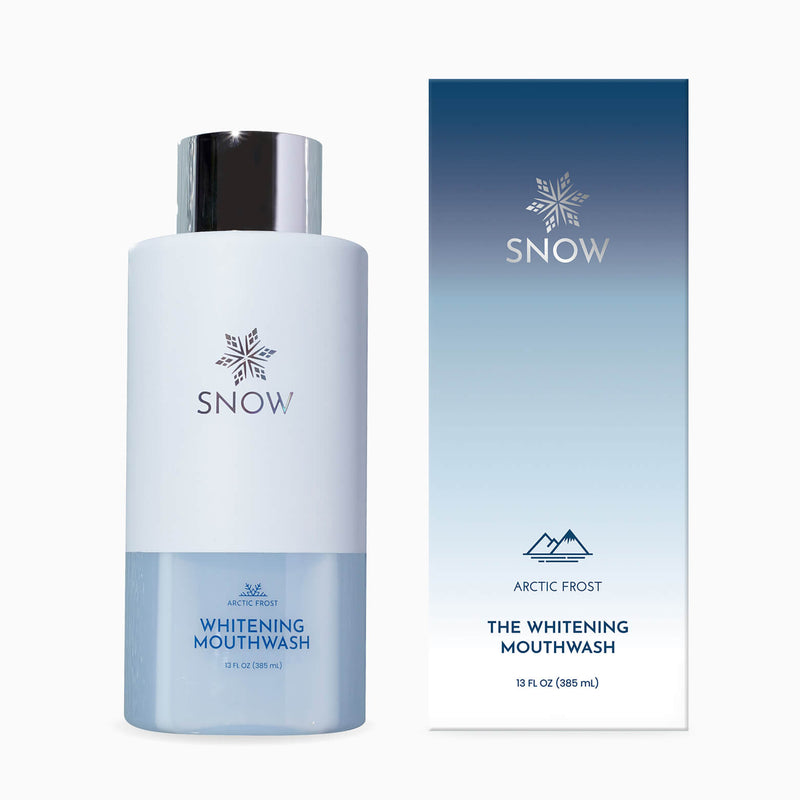Does water flosser remove plaque? Our findings show that it does.
In this article, we'll cover everything you need to know about water flossers and their ability to remove plaque, tartar, and more. We'll explain how water flossers work, when to use them, and what types are available to fit your needs.
You'll also learn about the differences between plaque and tartar and why professional cleanings are necessary for removing hardened tartar.
Let's dive into the world of water flossers.
What this article covers:- Does a Water Flosser Remove Plaque?
- Can a Water Flosser Remove Tartar?
- Plaque vs. Tartar
- How to Remove Plaque
- How to Remove Tartar
- How Do Water Flossers Work?
- When to Use a Water Flosser
- What Kind of Water Flossers Exist?
Does a Water Flosser Remove Plaque?
Yes, a water flosser can help remove plaque from your teeth. Plaque is a soft, sticky film that forms when bacteria in your mouth combine with sugars and carbohydrates.
If plaque isn't removed daily, it can lead to gum disease and tooth decay. A water flosser uses a stream of water to clean between teeth and along the gumline, flushing out food particles and plaque from hard-to-reach areas.
Using a water flosser regularly can reduce plaque buildup. For an optimal clean, the SNOW Water Flosser is a great choice.
It features three customizable pressure settings (Pulse, Normal, Soft) to suit various gum sensitivities, and its collapsible 8 oz water tank makes it easy for home or travel use. Fully rechargeable via USB-C, it can provide up to 70 uses per charge, ensuring a thorough and convenient cleaning.
Can a Water Flosser Remove Tartar?
Unfortunately, a water flosser cannot remove tartar once it has formed. Our research indicates that tartar, also called dental calculus, is hardened plaque that forms on teeth when plaque is not removed in time.
Tartar can only be removed by a dental professional during cleanings, using specialized instruments. That said, regularly using a water flosser can help prevent plaque from hardening into tartar.
By removing plaque before it has a chance to calcify, you can lower your risk of tartar buildup and the complications that come with it, like gum disease.
Plaque vs. Tartar
Plaque and tartar are related, but they're quite different in form and impact. Plaque is a soft, colorless film that forms on your teeth daily, made up of bacteria, food particles, and saliva.
Plaque can be easily removed by brushing, flossing, and using a water flosser.
Tartar, by contrast, is a rough, yellowish deposit that forms when plaque isn't removed. Tartar is much more difficult to eliminate and requires professional cleaning.
For daily teeth whitening, SNOW's Activated Charcoal Whitening Floss offers a natural solution. Made from bamboo fibers and infused with activated charcoal, this floss cleans teeth while whitening and detoxifying.
How to Remove Plaque
It starts with the basics. Brushing your teeth at least twice a day with fluoride or nano-hydroxyapatite toothpaste helps break down the sticky film of plaque on the surface of your teeth.
Flossing once daily is also essential for removing plaque between teeth, where your toothbrush might not reach. A water flosser can be a great tool to complement brushing and flossing.
Based on our observations, the pressurized water stream can clean areas that traditional floss might miss.
How to Remove Tartar
The only way to remove tartar is with a trip to the dentist. Your dentist or hygienist uses special tools during a professional cleaning to scrape the tartar off your teeth.
If tartar has built up below your gums, they may also perform a deeper cleaning called root planing to smooth the roots of your teeth and help prevent gum disease.

Can water flossing replace regular flossing? Generally, they work best together. For those who prefer the convenience of a floss pick, SNOW Charcoal Whitening Floss Picks offer a 2-in-1 tool to remove plaque and surface stains.
How Do Water Flossers Work?
How do water flossers work? These devices function by shooting a steady stream of water between your teeth and along your gums to remove food particles, plaque, and bacteria.
This makes water flossers an effective tool for keeping your teeth and gums clean, particularly for those with braces, dental work, or sensitive gums.
Does water flossing hurt? They're easy to use and gentle, making them a great option if traditional flossing feels uncomfortable.
When to Use a Water Flosser
The best time to use a water flosser is after brushing, ideally once a day before bed. This way, you're removing any remaining food particles and bacteria from your teeth before you go to sleep.
If you tend to get food stuck between your teeth during meals, you might also want to use a water flosser after eating.
For those with braces or dental implants, using a water flosser regularly can help keep your mouth clean and prevent issues.
What Kind of Water Flossers Exist?
There are a few different types of water flossers to choose from. Countertop models are the most common, offering multiple pressure settings and a larger water reservoir for extended cleaning.
These are great for home use, especially if more than one person will be using the flosser.
Cordless or portable water flossers, on the other hand, are perfect for travel or smaller spaces. They're easy to pack and convenient to use on the go.
IMAGE 3. Alt tag: “can you remove plaque with floss”
Conclusion
Removing plaque with a water flosser is one of the easiest ways. We've discussed how water flossers help remove plaque, the differences between plaque and tartar, and why regular dental cleanings are still necessary to remove tartar.
We also explored how water flossers work, the best times to use them, and the different types available to suit various needs.
Now is the perfect time to invest in your oral health. Try one of SNOW's water flossers today to experience cleaner teeth and healthier gums, and see the difference.
If you want to learn more, why not check out these articles below:
- Does Water Flosser Make Teeth White
- Does Water Flossing Help With Bad Breath
- Best Water Flosser
- Best Dental Floss
- Best Portable Water Flosser
- Best Travel Water Flosser
- Dental Tape vs Floss
- Dental Pick vs Floss
- Air Floss vs Water Floss
- Why Does My Floss Smell Bad?
- Why is Flossing Important?
- Why Does Flossing Feel Good?
- Can Toothpaste Cause Dry Mouth?
- Can You Use Whitening Toothpaste with Braces?
- Can I Use Fluoride Toothpaste After Whitening Strips?
























